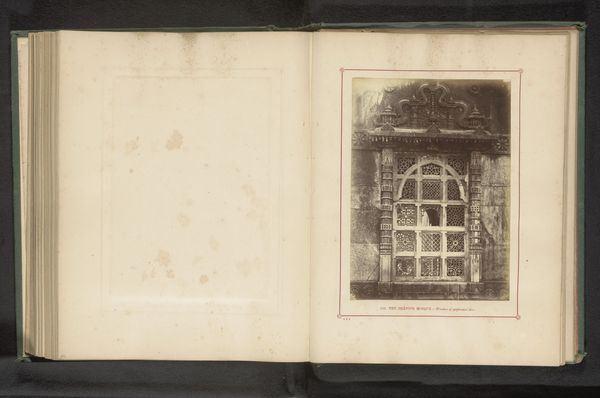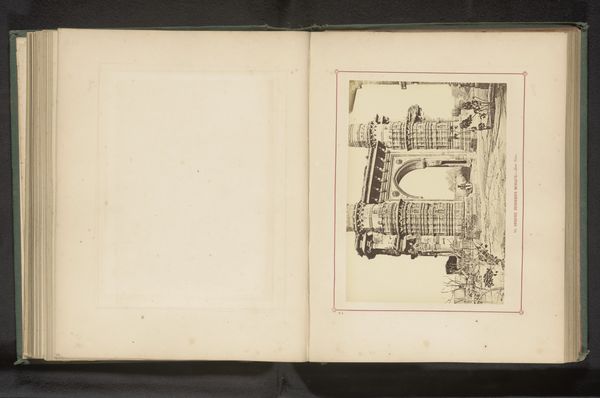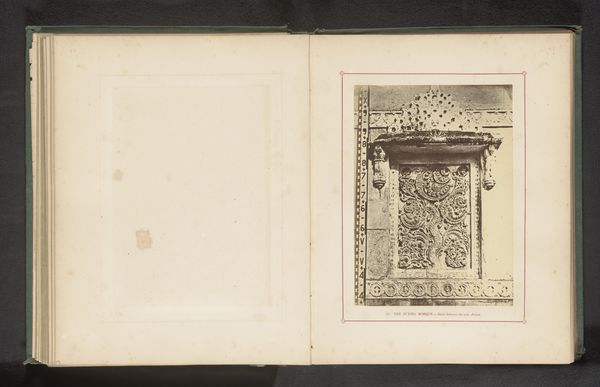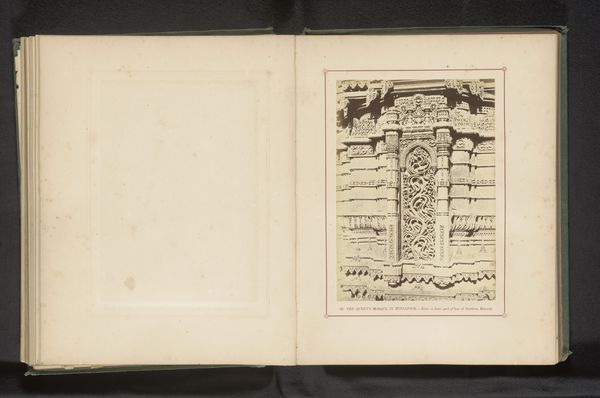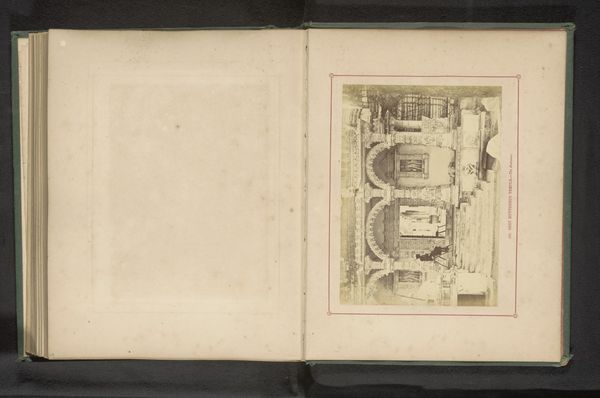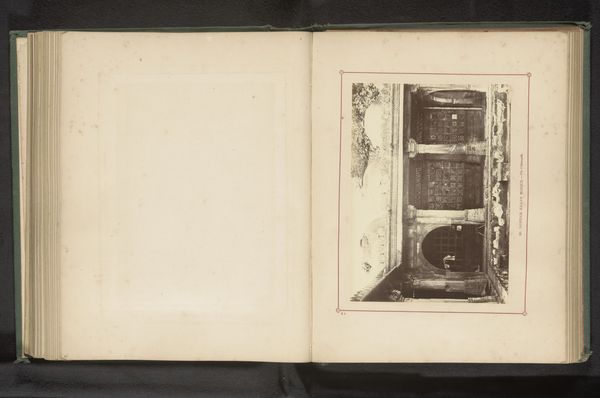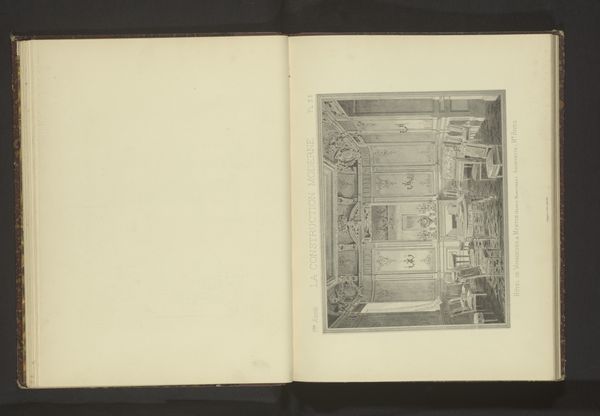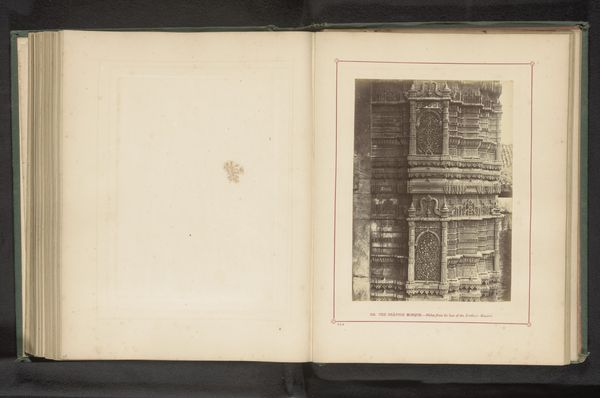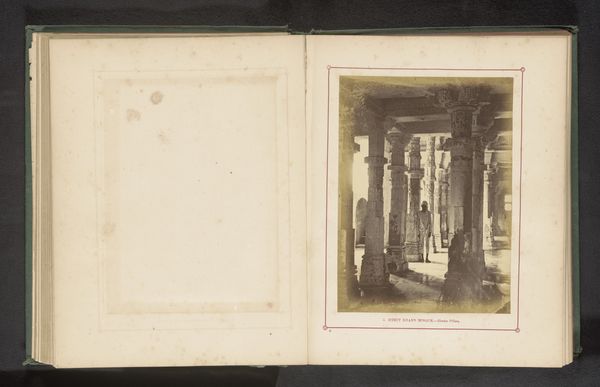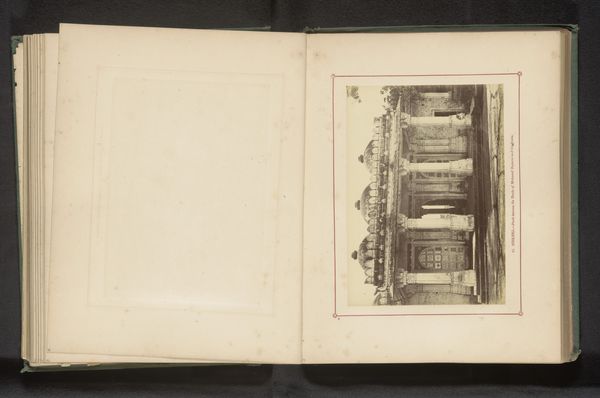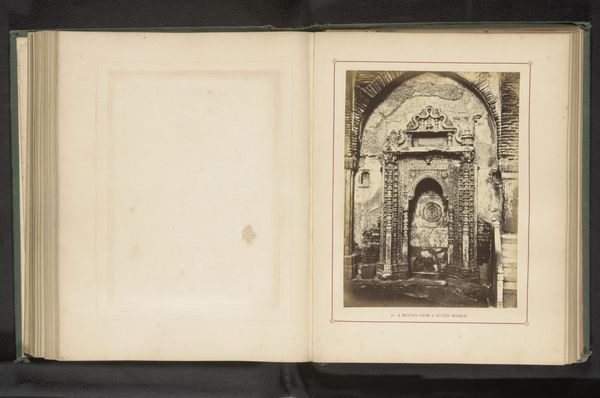
print, photography
# print
#
landscape
#
photography
#
cityscape
#
islamic-art
Dimensions: height 188 mm, width 136 mm
Copyright: Rijks Museum: Open Domain
Curator: Here we have a photographic print entitled "Raam van de Shapoor-moskee in Ahmedabad," that is, "Frame of the Shapoor Mosque in Ahmedabad," believed to be created before 1866 by Thomas Biggs. Editor: My first impression? Melancholy beauty, all intricate details faded into sepia tones. The shadows feel weighty, as if holding untold stories. It's beautiful, but carries a sense of something lost, or fading... Curator: It’s interesting you say that. These photographic prints, documenting Indian architecture, including Islamic structures, were often commissioned by colonial administrations. Their purpose was partly archival, an effort to record and categorize a cultural landscape perceived as "other." The very act of documentation becomes a power dynamic. Editor: Ah, so that's the weight I'm sensing – a sense of colonial observation, rather than simply the passage of time. Knowing that context does shift my view. But the detail captured is still astounding, look at the geometry, the layers of carving in that arch above the window. Curator: Indeed. The architecture displays the synthesis of Islamic and local Gujarati styles. The play of light and shadow is something Biggs, or another photographer working with the British administration, would have emphasized to showcase architectural sophistication, but within a pre-determined frame of observation, let's say. The print form also facilitated mass dissemination to a Western audience, thus framing public understanding. Editor: And that is such an interesting framing of a frame, right? Looking *through* it also asks who are we invited to look at that mosque, that place from where do we observe its culture and what for? It seems this picture leaves so much open to the eye, inviting it in – literally through that grid. A photograph like this almost becomes an idea of looking. Curator: Precisely, a portal to understand the complex social forces operating through these landscapes and monuments and how images shaped colonial administration. Editor: Absolutely, and with fresh eyes and some background it’s quite amazing to delve beyond just sepia beauty and start questioning. Thanks for this.
Comments
No comments
Be the first to comment and join the conversation on the ultimate creative platform.
